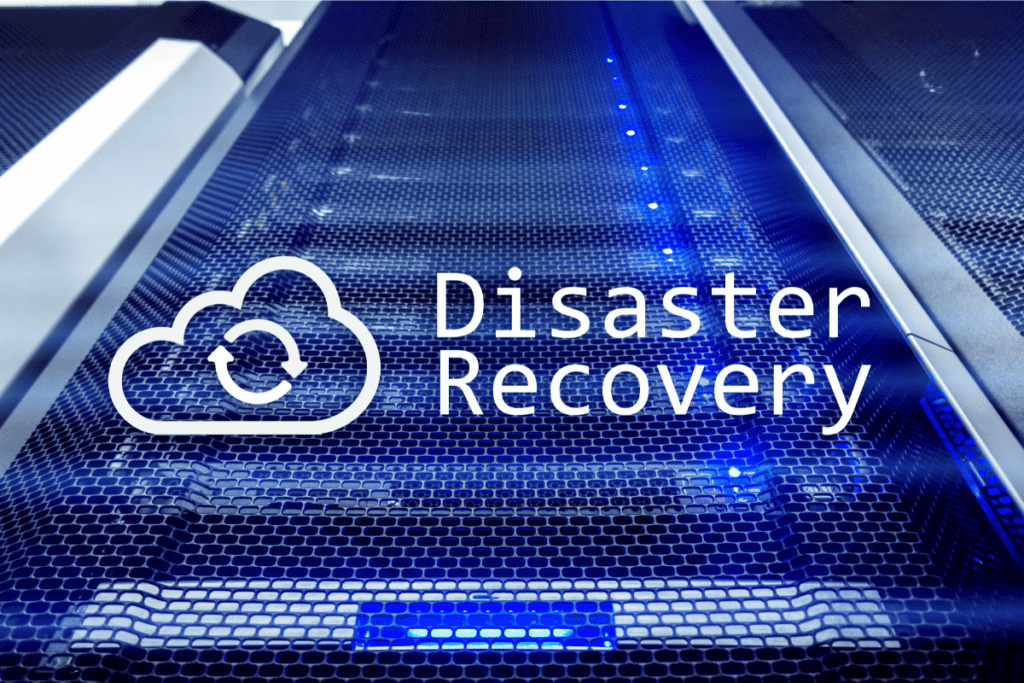Definition of Disaster Recovery in Cloud Computing
Disaster recovery in cloud computing refers to the process of implementing strategies and procedures to protect and recover critical data, applications, and systems in the event of a disaster. It involves ensuring that businesses can resume their operations promptly and efficiently after an unexpected disruption, whether it be a natural disaster, cyber attack, or hardware failure.
Unlike traditional disaster recovery methods that rely on on-premise infrastructure, cloud-based disaster recovery leverages the flexibility and scalability of cloud environments to provide cost-effective solutions for businesses of all sizes.
Importance of Disaster Recovery in Ensuring Business Continuity
In today’s digital era, where data is at the heart of every business function, having a robust disaster recovery plan is crucial for ensuring business continuity of normal operations. Disasters can strike at any time without warning, causing significant disruptions that may result in financial losses or damage to an organization’s reputation.
By implementing effective disaster recovery measures in the cloud environment, organizations can minimize downtime and quickly recover from adverse events. This not only helps mitigate potential revenue loss but also enhances customer trust by demonstrating a commitment to protecting sensitive data.
The reliance on cloud computing further emphasizes the importance of incorporating disaster recovery into business needs. With public cloud providers offering Service Level Agreements (SLAs) guaranteeing high availability and data redundancy, organizations can benefit from managed disaster recovery services.
These services often provide automated failover mechanisms and continuous replication of critical workloads across multiple geographic locations. In addition to these advantages, companies can leverage hybrid cloud environments that combine both on-premise infrastructure and public cloud resources for enhanced resilience.
Key Value
In this comprehensive guide to disaster recovery in cloud computing, we will delve into various strategies for creating robust plans tailored to organizational requirements. We will explore different approaches such as backup and restore methodologies along with virtual machine replication.
We will also discuss Disaster Recovery as a Service (DRaaS) and provide insights into selecting reliable third-party vendors. By the end of this guide, you will have gained a comprehensive understanding of disaster recovery in the cloud and be equipped with the knowledge to develop and implement effective plans to safeguard your business from unforeseen events.
Disaster Recovery Planning Basics
Identifying Potential Risks and Threats to Cloud Infrastructure
When considering disaster recovery in cloud computing, it is crucial to start by identifying potential risks and threats that could impact the cloud infrastructure. These risks can be broadly categorized into natural disasters, cybersecurity breaches or attacks, and hardware or software failures. Each of these poses unique challenges and requires specific considerations in a disaster recovery plan.
Natural Disasters: Unpredictable Forces of Nature
Natural disasters such as earthquakes, floods, hurricanes, or wildfires can wreak havoc on any business’s operations. In a cloud environment, where data centers are typically located in multiple geographic regions, it is essential to assess the vulnerability of each location to potential natural disasters. This evaluation will help determine if additional preventive measures, such as backup power supplies or reinforced infrastructure, are necessary to mitigate the risks.
Cybersecurity Breaches or Attacks: Protecting Data from Digital Threats
In today’s interconnected world, cybersecurity breaches have become a significant concern for businesses relying on cloud environments. The potential for unauthorized access to sensitive data or malicious attacks targeting cloud infrastructure highlights the need for robust security measures. Organizations must assess their vulnerabilities and implement appropriate security controls like encryption protocols, multi-factor authentication systems, and intrusion detection systems (IDS) to safeguard their data from cyber threats.
Hardware or Software Failures: Preparing for Technical Glitches
No system is perfect; hardware failures such as server crashes or cloud storage malfunctions can occur unexpectedly. Likewise, software glitches or bugs may disrupt critical operations within the cloud infrastructure. To address these challenges effectively, organizations should analyze their hardware and software dependencies, evaluate the reliability and redundancy of their systems, and establish failover mechanisms to ensure minimal downtime during such failures.
Assessing the Impact on Business Operations and Data Integrity
Understanding the potential risks is only the first step; it is equally important to assess their impact on business operations and data integrity. This assessment will help organizations prioritize recovery efforts, allocate resources effectively, and define appropriate recovery time objectives (RTO) and recovery point objectives (RPO). By quantifying the potential losses in terms of revenue, customer trust, or regulatory compliance, businesses can make informed decisions regarding disaster recovery strategies in cloud computing.
Disaster Recovery Strategies in Cloud Computing
Backup and Restore Approach: Safeguarding Data in the Cloud
In the world of disaster recovery, the backup and restore approach plays a pivotal role in ensuring data integrity and business continuity. Regular data backups of critical data to a separate dr site or storage system helps to protect against unforeseen events that may lead to data loss or corruption if disaster strikes.
In cloud computing, this strategy involves replicating essential files and databases to an off-site location or a different cloud environment. By implementing this approach, organizations establish recovery time objectives (RTO) and recovery point objectives (RPO) – key metrics that dictate how quickly systems must be restored and how much data loss is acceptable during recovery procedures.
To accomplish effective backup and recovery in cloud environments, businesses can leverage backup tools provided by their chosen cloud provider or utilize third-party solutions specifically tailored for disaster recovery in the cloud. These tools offer features such as incremental backups, version control, and encryption to ensure maximum security for stored data in the cloud.
Additionally, adopting these solutions often enables seamless integration with existing cloud resources, simplifying management processes while maintaining compliance with service level agreements (SLAs). The backup and disaster recovery approach provides organizations with peace of mind knowing that their critical assets are protected from potential disruptions.
Virtual Machine Replication: Ensuring Redundancy for Seamless Recovery
Another crucial approach to disaster recovery in the cloud is virtual machine replication. By replicating virtual machines across multiple geographic locations, businesses create redundancy within their infrastructure.
This redundancy ensures that even if one region experiences a disaster event or outage, resources can seamlessly transition to another functioning location without significant disruption. To implement virtual machine replication effectively, failover mechanisms are put into place.
These mechanisms automatically redirect traffic from an affected site to an operational one when necessary. This proactive approach allows businesses to maintain uninterrupted service delivery even in the event of a disaster.
Moreover, virtual machine replication helps organizations achieve their recovery time objectives (RTO) by reducing downtime and enabling rapid restoration of critical services. By strategically replicating virtual machines in multiple locations, businesses can distribute workloads and minimize the impact of hardware and software failures.
This approach not only enhances operational resilience but also provides the flexibility to scale resources when needed. Virtual machine replication is a valuable component of any cloud disaster recovery strategy, empowering businesses to navigate through disruptions with minimal disruption to their operations.
Disaster Recovery as a Service (DRaaS)
Disaster recovery-as-a-service (DRaaS) has emerged as a game-changer in the realm of cloud computing, offering organizations an efficient and scalable solution to ensure business continuity. DRaaS encompasses a comprehensive set of cloud-based disaster recovery services and tools that enable businesses to protect their critical data, applications, and infrastructure from unforeseen disasters or disruptions. By leveraging DRaaS, companies can minimize downtime and data loss while optimizing their disaster recovery strategy.
DRaaS presents a powerful shift from conventional methods. By tapping into the specialized knowledge of third-party providers and harnessing scalable, cost-efficient solutions, businesses can effectively distribute security risks and financial burdens. This approach bolsters organizational resilience, enabling them to adeptly traverse the dynamic terrain of cloud disaster recovery. An in-depth assessment of recovery time objectives, scalability potentials, automation features, and data protection standards is crucial when choosing a DRaaS provider.
Cost Savings
One of the key benefits of DRaaS is its ability to offload the management of disaster recovery processes to third-party vendors. Instead of building and maintaining an in-house disaster recovery infrastructure, organizations can rely on experienced providers who specialize in delivering robust DR solutions.
These vendors possess extensive expertise in configuring and managing cloud environments for optimal resilience. By partnering with them, businesses can access cutting-edge technologies and industry best practices without facing the complexities associated with deploying on-premises solutions.
Recovery Time Objective (RTO)
When selecting a DRaaS provider, several considerations come into play. First and foremost is the recovery time objective (RTO), which indicates how quickly operations can be restored following a disruption.
Different applications may have varying RTO requirements based on their criticality to business operations. A reliable DRaaS provider should clearly define RTO capabilities that align with your specific needs.
Scalable DR Platform
Another vital aspect is assessing the scalability offered by the provider’s solution. As your business evolves, so does your workload volume and complexity.
A scalable DRaaS platform enables you to seamlessly accommodate increasing demands without compromising performance or incurring unnecessary costs. Additionally, look for features such as automation capabilities that streamline failover processes during disasters or disruptions.
Compliance and Data Security Considerations
Considering data security is also paramount when selecting a DRaaS provider. Data encryption at rest and in transit, along with secure network connectivity options like VPNs or dedicated circuits, are crucial for safeguarding sensitive information.
Compliance with industry standards or regulations, such as GDPR or HIPAA, should also be considered if applicable to your organization. Implementing a robust disaster recovery plan in the cloud is essential for ensuring business continuity and minimizing the impact of unforeseen disruptions.
Implementing Disaster Recovery Plans in Cloud Computing
Creating an Incident Response Team for Effective Coordination during Emergencies
Creating an incident response team is crucial to ensure a well-coordinated and timely response during emergencies. This team should consist of individuals from various departments, including IT, operations, security, and management. Each member should possess the necessary skills and knowledge to handle different aspects of disaster recovery.
The key responsibilities of the incident response team include:
– Identifying and assessing the severity of the disaster event
– Communicating with relevant stakeholders and providing timely updates
– Coordinating with external service providers or vendors if required
– Performing initial damage assessment and prioritizing recovery efforts
To enhance effectiveness, it is important to establish clear roles and responsibilities within the incident response team.
Designating a leader who can make quick decisions under pressure helps streamline decision-making processes. Additionally, conducting regular training sessions, tabletop exercises, or simulations can prepare the team for various scenarios and ensure smooth coordination during real emergencies.
Documenting Step-by-Step Procedures for Disaster Recovery Scenarios
Documenting step-by-step procedures for different disaster recovery scenarios is essential to ensure consistency in executing recovery plans. These procedures act as a reference guide for the incident response team members during high-pressure situations when time is of the essence. The documentation should include:
– Clear instructions on how to initiate backup or failover mechanisms
– Details about contact information for critical personnel or vendors
– Specific steps to restore services in priority order
– Information on how to validate data integrity after recovery
Furthermore, it is important to update these documents regularly as the cloud infrastructure evolves or new technologies are implemented. Proper documentation not only helps minimize errors but also enables new team members to quickly understand and contribute effectively during emergency situations.
Testing
Testing plays a crucial role in validating the effectiveness and reliability of disaster recovery plans in cloud computing. Regular testing helps identify potential gaps or weaknesses that need to be addressed proactively.
There are several types of tests that can be conducted, including:
–Tabletop exercises: Simulating different disaster scenarios and discussing the response procedures without making any actual changes to the live environment.
-Partial failover tests: Testing specific components or services to evaluate their failover capabilities and their impact on the overall system.
-Full-scale failover tests: Simulating a complete failure of the primary system and validating the recovery process end-to-end.
It is important to plan these tests carefully, ensuring they do not disrupt critical business operations while still providing meaningful insights into the effectiveness of the disaster recovery strategy. Regular testing not only helps identify any deficiencies but also builds confidence in the incident response team and reassures stakeholders that necessary measures are in place to protect critical business assets.
Conclusion
In today’s rapidly changing digital landscape, having a robust dr plan is paramount for businesses relying on cloud computing. Creating an incident response team ensures effective coordination during emergencies, while documenting step-by-step procedures helps streamline recovery efforts.
Regular testing helps validate these plans and identifies areas for improvement. By implementing comprehensive disaster recovery plans in cloud computing, businesses can help ensure business continuity even in the event of power outages, cyberattacks, or natural disasters.
Embracing proactive preparations fosters resilience and strengthens trust with customers and partners alike. With careful planning and continuous refinement, organizations can confidently navigate unexpected disruptions with minimal impact on operations.
If you liked this article, remember to subscribe to MiamiCloud.com. Connect. Learn. Innovate.







